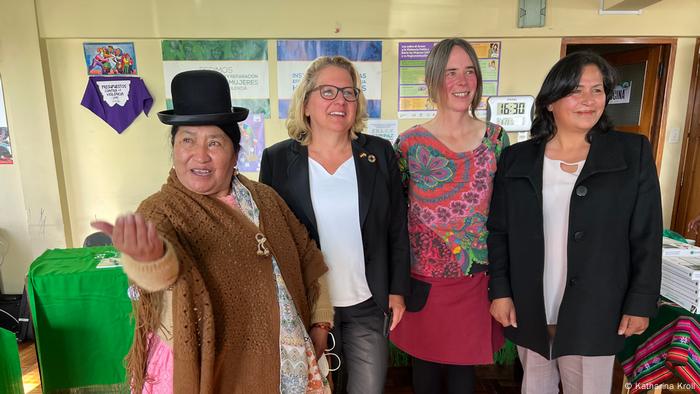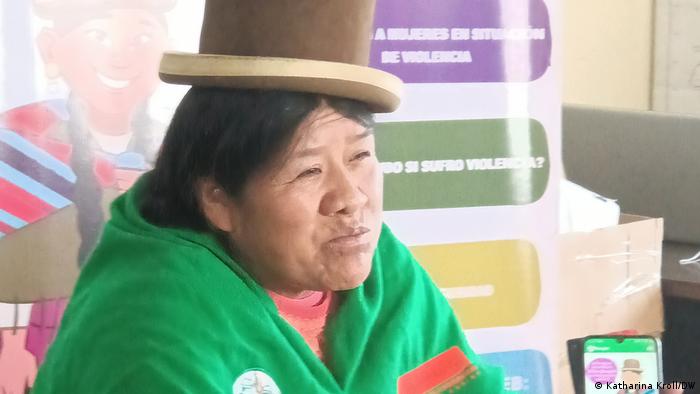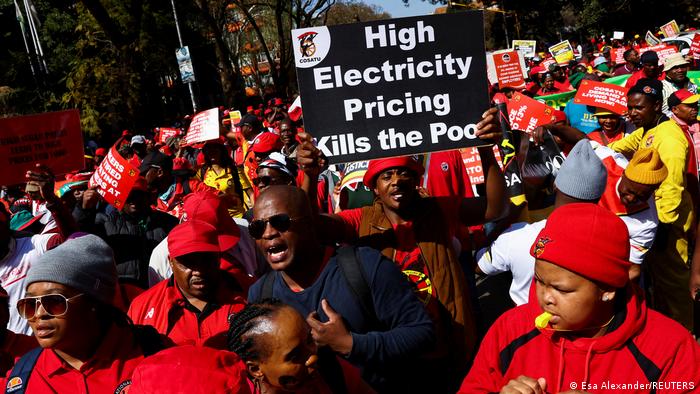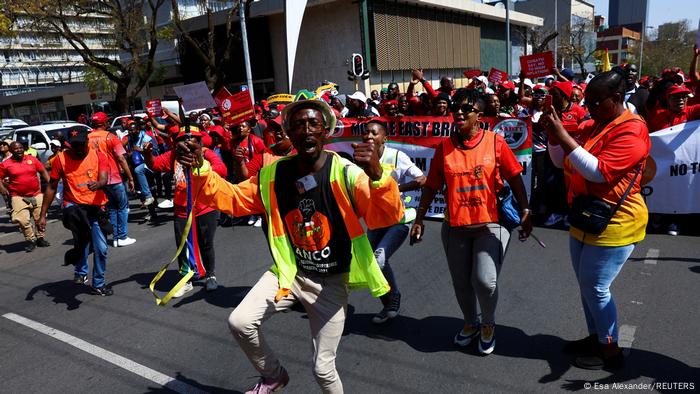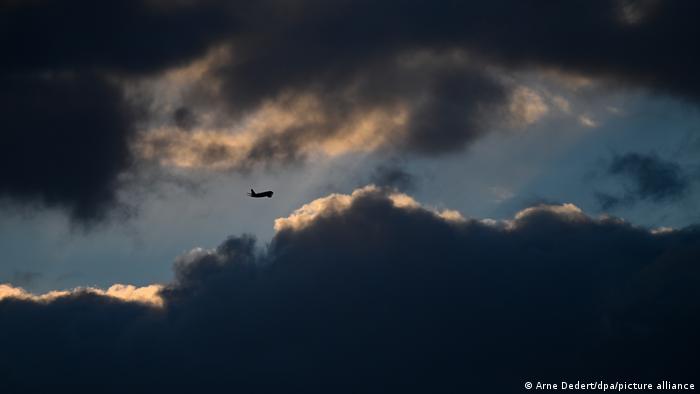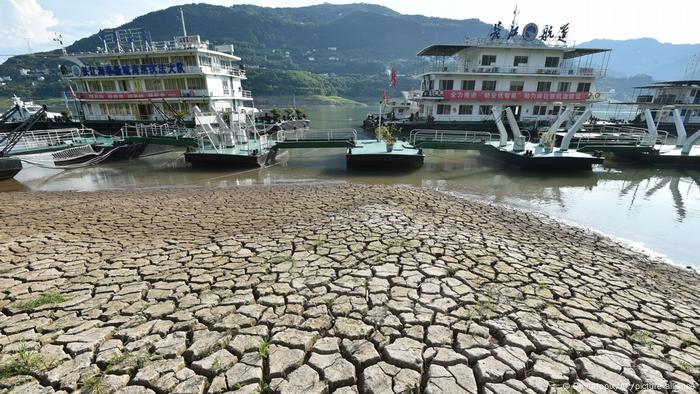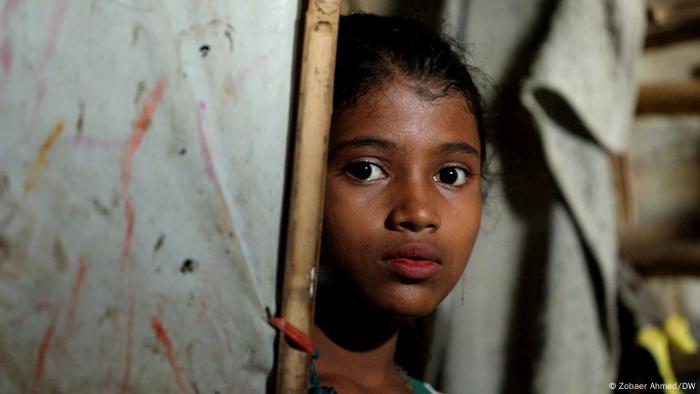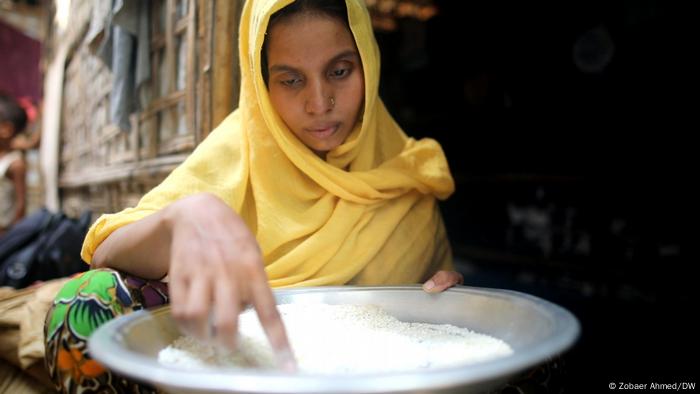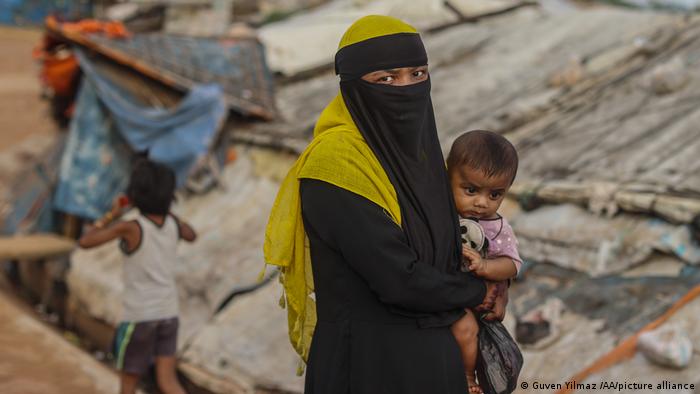An estimated 1.1 million Rohingya refugees were taken in by neighboring Bangladesh after Myanmar’s military unleashed a violent crackdown in 2017, in what many describe as a genocide against the Muslim-majority group.
Bangladesh has raised the alarm over the cost incurred by the refugee load, and warned of a potential regional crisis. The pressure is also rising internationally, with the UN Human Rights Council passing a resolution in June that called for the rapid repatriation of Rohingya.
Bangladesh's foreign minister, Abdul Momen, also reportedly pressed the issue earlier this month during a meeting with Josep Borrell, the EU's foreign policy chief, on the sidelines of a summit in Cambodia.
Faint hope of returning
At the moment, however, the outlook is bleak for those who want to see Rohingyas return to Myanmar. International law states that refugees should not be sent back without a guarantee of safety and humanitarian treatment. According to Brussels, this cannot be guaranteed.
EU spokesperson Nabila Massarali told DW that the bloc "supports the voluntary, orderly, safe and dignified repatriation of the Rohingya refugees to Myanmar, as soon as feasible, if and when conditions allow."
But she added that the present situation in Myanmar was "not conducive to a return of refugees in the near future."
Myanmar has been in turmoil since the military orchestrated a coup in February 2021, overthrowing the democratically-elected National League for Democracy (NLD) government. That sparked an ongoing civil war, in which — according to conservative estimates — more than 2,000 civilians have been killed. Hundreds of thousands have been displaced, says the Thailand-based NGO Assistance Association for Political Prisoners.
The military only controls limited areas of Myanmar. The rest lies under the authority of defense forces loyal to the National Unity Government (NUG), a shadow government set up by ousted civilian politicians and activists, and the numerous ethnic armed organizations that have been in conflict with the national authorities for decades.
Fighting escalates in Rakhine
Making matters worse, there is growing violence in the southwestern Rakhine State — from where many of the Rohingya refugees originally fled and would likely return — between the Arakan Army, an ethnic rebel group, and the Myanmar military. At least 10 clashes have been recorded since July 18, Radio Free Asia reported this week. This does not bode well for the cease-fire agreement that both sides agreed to in 2020.
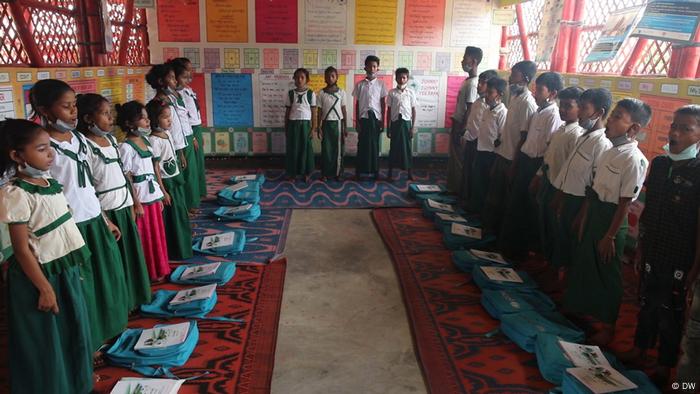
After 2017, over a million Rohingya refugees were taken in by Bangladesh
"The Arakan Army has worked assiduously in the past two years to build up their political autonomy, and that is completely unacceptable to the military regime," said Zachary Abuza, a professor at the National War College in Washington, DC.
"Whether it is sheer arrogance or a legitimate concern that the Arakan Army might try to secede, the military is starting a war that it can ill afford, and one that will have wider strategic consequences in Myanmar."
Arakan Army softening its stance on Rohingya
Rohingya repatriation would require cooperation from the Arakan Army. The political wing of the ethnic militia group, known as the United League of Arakan, administrates much of Rakhine State, analysts say.
It has recently toned down its previous hostilities towards the Rohingya minority, which has been persecuted in Myanmar for decades. Tun Myat Naing, the Arakan Army chief, has expressed his willingness to integrate the Rohingya back into Rakhine society.
The militia has its own reasons for changing course, said Kristina Kironska, a Bratislava-based academic who specializes in Myanmar. In May, senior leaders of the Arakan Army held talks with the civilian shadow government, the NUG, for the first time since the coup. This sparked speculation over a possible alliance against the military junta ruling Myanmar.
The NUG says it will devolve power considerably, or even possibly introduce a federal system, if it manages to oust the junta. This could play out well for the Arakan Army, which has been demanding self-determination for Rakhine State for well over a decade. Analysts believe that the militia group is seeking international legitimacy, and assistance on the Rohingya crisis would earn it support from abroad.
A chance for peace due to armed rebellion
"For the Rohingya, paradoxically, the coup and the emergence of the Arakan Army [in conflict with the military] have opened a one-in-a-century opportunity — an opportunity for peacebuilding in Rakhine," said Myanmar expert Kironska.
The big question, she added, is whether the EU and other foreign stakeholders are willing to engage with the Arakan Army in the process of repatriation.
EU spokesperson Massrali said Brussels "has so far [had] no contact with the Arakan Army in Myanmar on the process of repatriation of Rohingya and has no plan to establish relations to that end."
But a senior source in the EU appeared to contradict this statement when contacted by DW.
The bloc has had some dialogue with the Arakan Army "including on the Rohingya issue," said the source, speaking on condition of anonymity.
The EU isn't alone in being cagey about dealing with Myanmar's numerous ethnic militias. The US government's position on that the topic is "broken," said DC-based Abuza. "They completely need to change course and actively engage the [ethnic armed organizations], as they will have a seat at the table in a future Myanmar."
In turn, the EU source said the dialogue between the shadow government and the Arakan Army on an anti-junta coalition and possible repatriation would probably be more important than what the EU did.
"The noises coming out of the NUG regarding the Rohingya citizenship and repatriation have been encouraging," they added.
NUG and the Rohingya genocide
The NUG is composed primarily of deposed politicians from the former NLD government, which has a tainted history of relations with the Rohingya minority. The genocide took place while the NLD was in government. Deposed civilian leader Aung San Suu Kyi — whose prison sentence for trumped-up corruption charges was extended to 18 years earlier this month — was widely criticized by the international community for failing to condemn the military-led genocide.
But the NUG has since expressed its willingness to accept the Rohingya and repeal the 1982 Citizenship Act, which has been used to deny Rohingya citizenship.
Rohingya repatriation from Bangladesh remains unlikely
The attitude towards Rohingya people in Myanmar seems to be changing. However, the return of refugees from neighboring Bangladesh five years after the army drove them out is not expected any time soon.
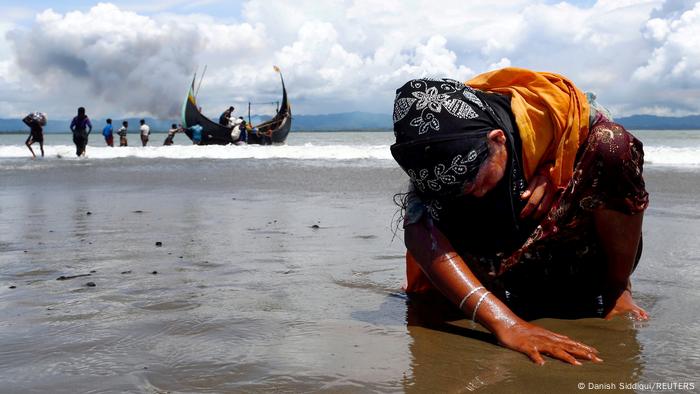
An exhausted Rohingya reaches Bangladesh after fleeing Myanmar
Five years ago, Myanmar's army launched what it called "clearance operations" against the Muslim-minority Rohingya people in Rakhine State, which borders Bangladesh.
Civilians were murdered, girls and women were raped and entire villages were razed to the ground. About 700,000 Rohingya fled to neighboring Bangladesh, where most remain to this day in refugee camps.
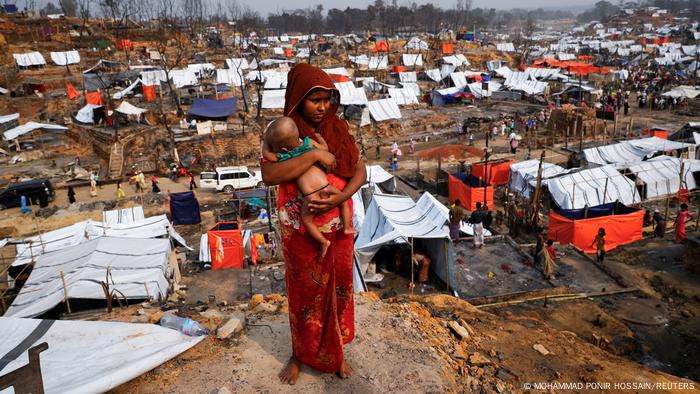
There are hundreds of thousands of people stranded in refugee camps
Myanmar's armed forces said the campaign was in response to attacks mounted several days earlier on police stations by the Arakan Rohingya Salvation Army (ARSA), a militant resistance group. The UN and human rights organizations judged the retaliation as disproportionate. The army is accused of committing crimes against humanity and genocide. Currently, a case against Myanmar for violating the Convention on the Prevention and Punishment of the Crime of Genocide is pending before the International Court of Justice in The Hague.
Decades of discrimination
The Rohingya are not recognized by Myanmar as a distinct ethnic group, and have been subject to discrimination and demonization for decades. Many lack citizenship rights and cannot move around freely, send their children to school or access medical care. Presently, over one million Rohingya live in Bangladesh, and some 300,000 to 400,000 live in other foreign countries. But about 400,000 Rohingya still live in Myanmar, mostly in camps near Sittwe, the capital of Rakhine State. This is where most of the Rohingya in the country lived before being driven out. But the dominant population in the state is made up of the Arakanese, a Buddhist ethnic group, who have been in conflict with the central government and military for decades.
Though most Rohingya have lived in Myanmar for generations, many others in the country regard them as illegal migrants from neighboring Bangladesh. They also accuse them of having too many children, or marrying Buddhist women and thereby threatening the country's Buddhist traditions. This is unlikely to happen given that 87% of the population is Buddhist. It was influential nationalist monks who spread the myth of a Muslim takeover in incendiary sermons and on social media ahead of 2017. Studies have shown that the smear campaign caught on because anti-Rohingya prejudice and systematic discrimination had been widespread for decades.
Changing attitudes?
However, attitudes towards the Rohingya have changed since the coup in February 2021 and the army's jailing of Aung San Suu Kyi and brutal crackdown on protests. Now that the army has targeted the majority ethnic Bamar population, there is also a certain form of solidarity, particularly among Generation Z. Young activists, some of whom have turned their back on the policies of Aung San Suu Kyi's National League for Democracy (NLD), are fighting the military and demanding "justice for the Rohingyas" — whatever that may actually mean.
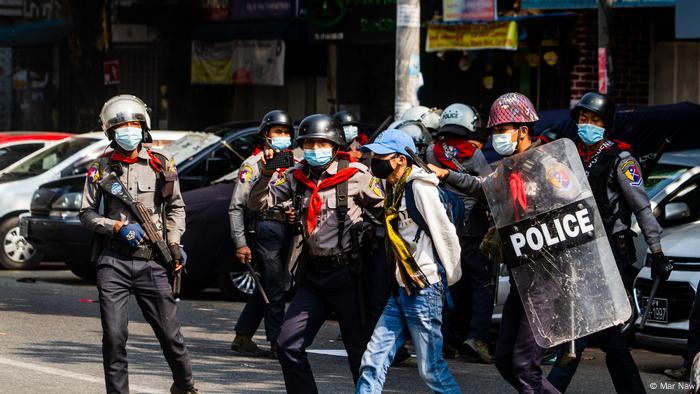
The 2021 coup sparked nation-wide protests
The National Unity Government (NUG), a shadow government that was formed in exile after the coup, issued a statement regarding its Rohingya policy in June 2021 and reiterated its position in March 2022: "The Policy commits to the safe, voluntary, dignified, and sustainable return of Rohingya refugees and internally displaced persons, and to comprehensive legislative and policy reform in support of citizenship, equality in rights and opportunity, and justice and reparations." The NUG also appointed Aung Kyaw Moe, a Rohingya, human rights adviser. He recently spoke to DW about the situation in Myanmar.
Currying favor with the West?
It is difficult to say with certainty how genuine or far-reaching this solidarity with the Rohingya actually is. And as the NUG has hardly any real political power in Myanmar, its statement currently amounts to little more than a declaration of intent.
What is clear is that the NUG's main priority is its fight against the military. Since it is still counting on the support of the West, which so far has been very restrained and has only provided humanitarian assistance, its new-found solidarity with the Rohingya might be motivated by its own interests. After all, the US and European governments are very concerned about the human rights of Myanmar's Rohingya. Thus, the NUG is being accommodating to the Western position even though some of its members rejected it before 2021.

Comprised largely of members of Aung San Suu Kyi's NLD party, the NUG finds itself in a dilemma over this matter. In 2019, Suu Kyi, who was State Counsellor of Myanmar at the time, went to the International Court of Justice to defend Myanmar against accusations of genocide. By doing so, she was effectively protecting the miliary, with the backing of many of her supporters.
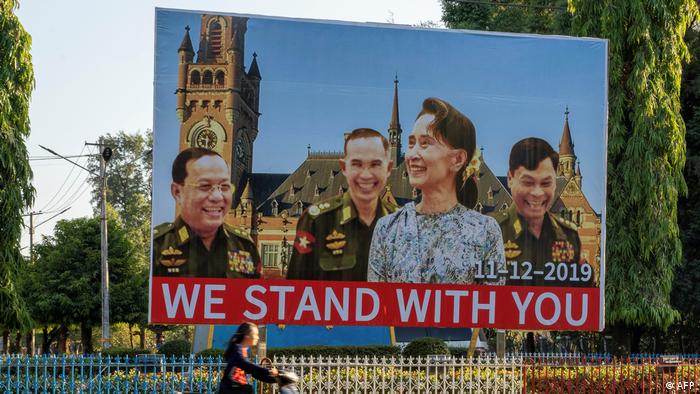
As State Counsellor, Aung San Su Kyi defended Myanmar in The Hague
If her stance on the Rohingya is now called into question, it means that she was either mistaken or instrumentalized by the military. Both ideas are hard to stomach for many people who revere Suu Kyi like a saint. In fact, such suggestions could even lead her supporters to oppose the NUG.
There are no surveys or empirical studies on how people in Myanmar view the Rohingya. It is, therefore, unclear whether broad swathes of the population have changed their mind about this ethnic minority since the 2021 coup, given the decades of discrimination preceding it.
Repatriation impossible
What is certain is that under the current circumstances, the Rohingya refugees stranded in Bangladesh cannot yet be repatriated
During a visit in early August, UN High Commissioner for Human Rights Michelle Bachelet only mentioned the repatriation of Rohingyas to Myanmar once. She said that this must "always be conducted in a voluntary and dignified manner, only when safe and sustainable conditions exist."
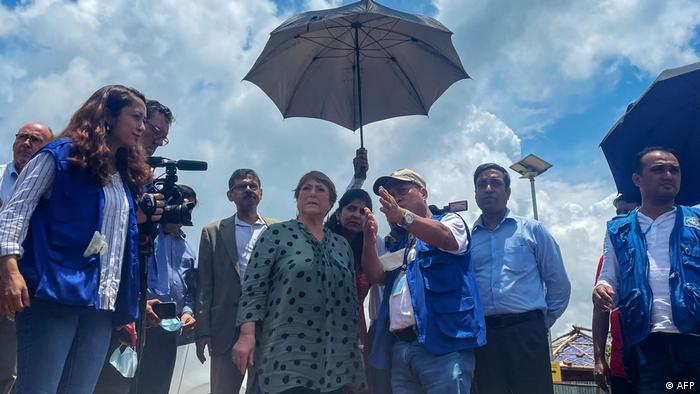
Michelle Bachelet, UN human rights chief, visited Bangladesh in early August
For his part, Aung Kyaw Moe told DW that not much had improved in Rakhine State and "the situation is almost the same as in 2017."
Speaking on the "Myanmar in a PodShell" podcast, Myanmar analyst Tony Waters seemed to agree and predicted that "repatriation to Rakhine is not going to happen, that is self-evident for everybody who follows Myanmar."
Meanwhile, Myanmar's civil war rages on, and its economy lies in ruin. In Rakhine State, the cease-fire between the Arakan Army and Myanmar's armed forces is increasingly fragile. If hostilities resume, the Rohingya could well once again find themselves caught in the crossfire.
This article was translated from German.
With repatriation attempts unlikely in the near future, the EU is instead focusing on aid to help the refugees. In May, Brussels donated an additional €22 million ($22 million) in assistance, which will mainly go to Rohingya in Bangladesh.
"In the absence of the return of refugees to Myanmar, it is vital to ensure the delivery of essential support and services to the refugees," said Massrali.
